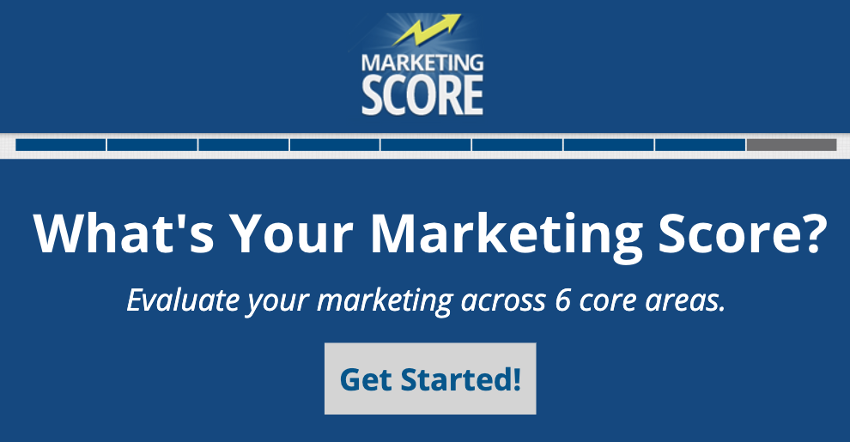 Owned, earned and paid media may be converging, but that doesn’t mean marketers should ignore the distinct differences between the three.
Owned, earned and paid media may be converging, but that doesn’t mean marketers should ignore the distinct differences between the three.
Owned content is your foundation. It exists on your website, blog, social media channels and emails. It’s consumed by your newsletter recipients, subscribers and email lists.
At PR 20/20, owned content is often part of builder campaigns: long-term efforts that create the necessary platform on which you will develop your brand, differentiate from competitors, and expand your reach and influence. It also presents the most flexibility and control. In other words, it’s the perfect place to fine-tune your inbound strategy.
Below, I outline easily overlooked ways that owned content can be used to fuel inbound marketing campaigns.
1. Target buyer personas.
After defining your buyer personas, use owned channels to create content that addresses their motivations, challenges and questions. With full access to the back-end analytics, this is where you can really test and analyze what topics, formats, lengths and publishing frequency your readers prefer.
Tip: If you want an awesome example of how to get really data-driven with your content mix, check out this post by Ginny Soskey (@gsosk), marketing blog section editor at HubSpot—Quality vs. Quantity: A 6-Month Analysis of the Age-Old Blogging Debate.
2. Develop content themes.
Owned content is the place to establish the core editorial themes that underpin your content marketing program. There’s no silver bullet answer to what yours should look like, but your content should address all of the following:
- Your buyer persona’s problems and questions.
- Your reader’s interests.
- Your brand’s voice and vision.
Based on your buyers, industry and marketing goals, test until you find the right mix for your organization.
3. Fill in buyer journey gaps.
Don’t make buyers leave your site to find the answers to their questions. Give your future customers everything they need to realize their need, explore solutions, compare options and make a purchasing decision.
Not sure whether your content addresses the above? See Jessica Miler’s (@jessica_joellen) post for step-by-step instructions on mapping your content, including a free, downloadable customer journey guide.
4. Build reach.
If a tree falls in the woods and there’s no one on your subscriber lists to receive the email … You get the idea. Driver campaigns, or short, focused marketing programs, aren’t nearly as effective if you haven’t built up the proper marketing foundations. Drivers capitalize on existing assets to generate short-term returns in the middle and bottom of the funnel (i.e. leads, new customer conversions, recurring sales),
Use owned content to build your brand’s reach so that when you have something worth sharing, you have a captive audience to share it with.
>> Rate the strength of your marketing. Get your free Marketing Score. <<
5. Stockpile core assets.
The Google Gods smile on long-form content because it excels at answering searchers’ questions. Comprehensive content assets also make it easier to produce repurposed content for other channels, and serves as a logical backlink in PR, thought leadership and influencer relations campaigns.
Speaking of, Kissmetrics explains this topic in great detail: Why You Should Create Long-Form Content (And How to Do It).
6. Create high-value content offers.
Smart brands are creating content that attract readers and captivate audiences. Smarter brands turn some of those eyeballs into leads through quality, gated content. They save their best content that is, as Jay Baer (@jaybaer) would say, so good their audience would pay for it. Or in this case, offer their email address in exchange.
For content marketers, this tactic is nothing new. But it’s still worth repeating: If you aren’t consistently creating high-value, owned content, you’re failing to create new opportunities to capture and qualify inbound leads.
7. Develop thought leadership.
Want to be known as an expert? You better have some bylines to your name. To catch the attention of industry influencers, journalists or speaker submission panels, start by building a library of quality content. Owned channels give you the freedom and flexibility to tackle niche or controversial topics with depth and clarity.
Related: You Should Have a Thought Leadership Strategy. Here’s Why.
8. Activate PR strategy.
Speaking of journalists, owned content is an essential piece of well-executed PR campaigns. For example:
- Link to blog posts that provide context to media pitches.
- Reference a video when submitting a subject matter expert as a source.
- Offer up a free ebook, whitepaper or research report of interest to the publication’s readers.
The media is stretched thin. The more original, insightful content you can provide, the more successful your pitching will be.
Create Your Owned, Earned, Paid Media Mix
Taking full advantage of your content is all about working smarter, not harder. For more on how to better leverage owned, earned and paid media’s strengths, see my post on Relevance.com.
To assess your organization’s marketing foundations, get your free Marketing Score.
What are your tips to propel inbound marketing performance? Share them below!
Image source: Soreen D via Flickr

%20Logo_BlueOrange_Trademark.png?width=800&height=269&name=Ready%20North%20(RN)%20Logo_BlueOrange_Trademark.png)




.jpg?width=300&name=Services%20Hub%203%20(3).jpg)



COMMENTS